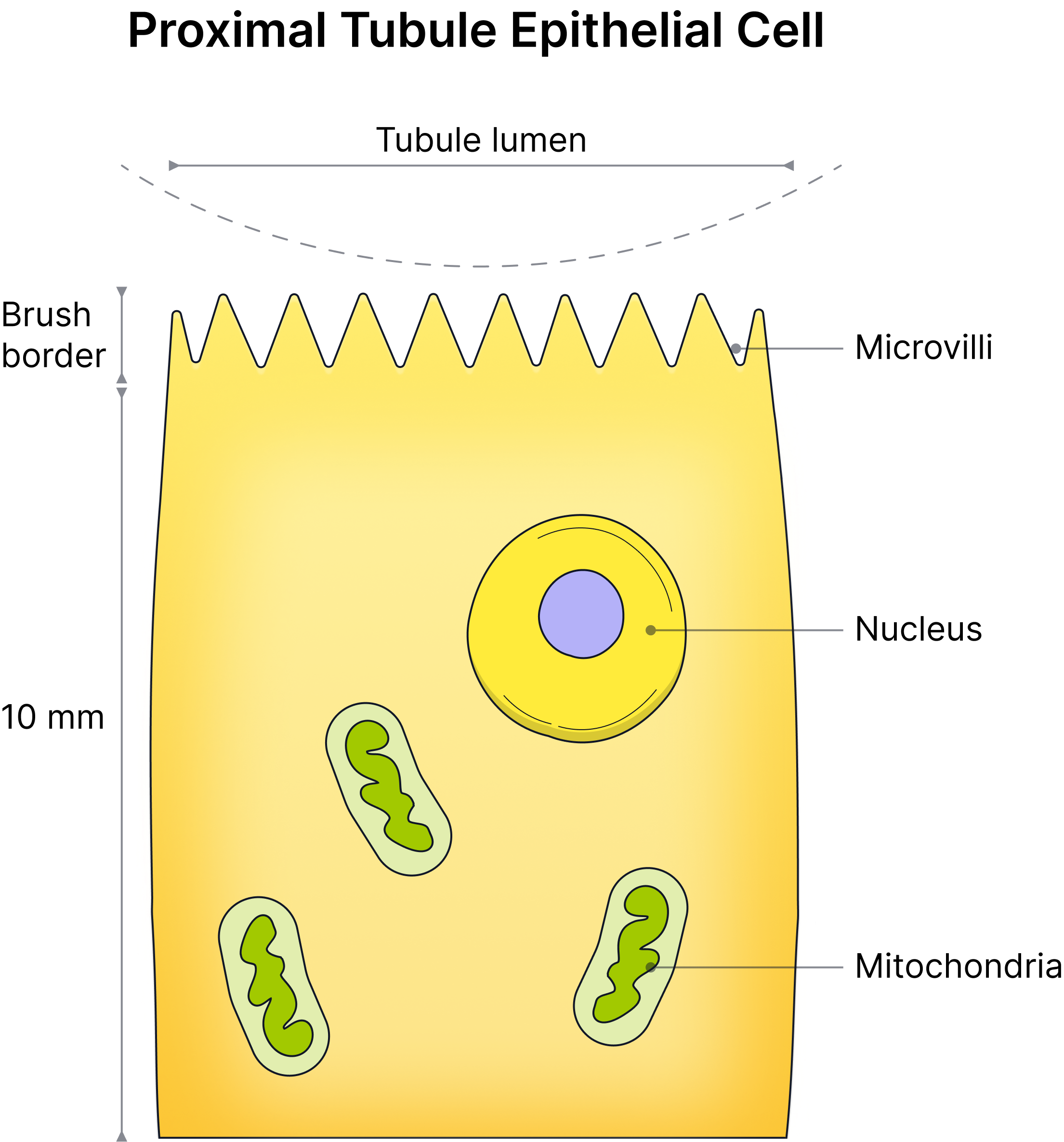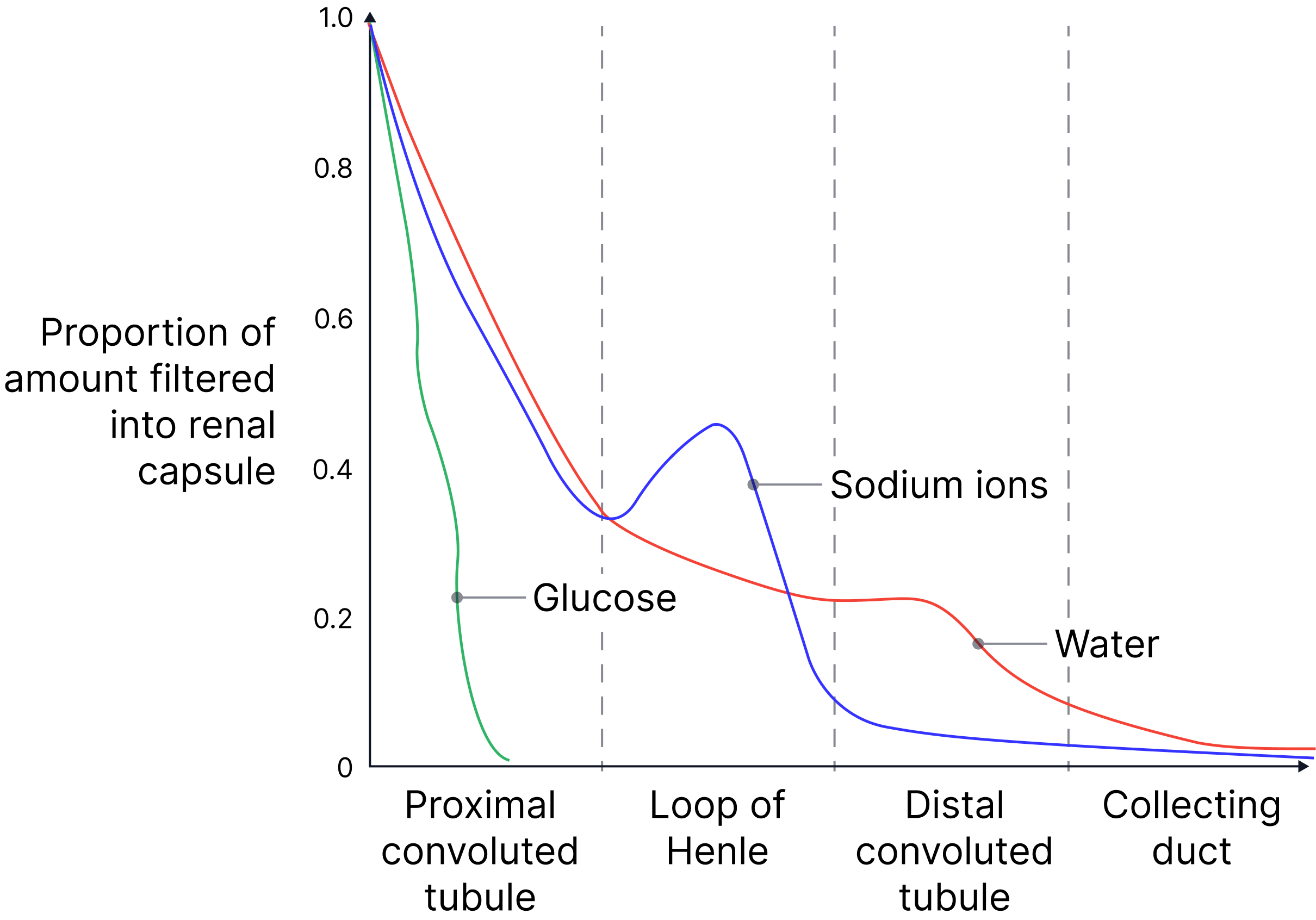Selective Reabsorption
Laura Armstrong
Teacher

Contents
Recall Questions
This topic requires prior knowledge of co-transport and kidney structure. You can test your knowledge below.
What is co-transport?
Movement of two substances across a membrane via the same protein (e.g. Na⁺ + glucose).
Why does co-transport require ATP indirectly?
ATP is required to actively transport Na⁺ out of the cell to maintain a diffusion gradient. Na⁺ then diffuse back in down their concentration gradient, carrying another molecule, such as glucose, with them.
What substances are forced out of the blood during ultrafiltration?
Water, glucose, amino acids, urea, and salts (but not proteins or cells).
Topic Explainer Video
What Is Selective Reabsorption?
- After ultrafiltration, the glomerular filtrate contains useful substances (e.g. glucose, amino acids) that must not be lost in urine.
- Selective reabsorption is the process of reabsorbing these substances from the proximal convoluted tubule (PCT) back into the blood.
- It ensures that useful molecules are retained, and waste products (e.g. urea) are excreted.
Step-by-Step: How Selective Reabsorption Works
1. Sodium Ion Active Transport
- Sodium ions are actively transported out of PCT epithelial cells into surrounding capillaries (via sodium-potassium pumps).
- This creates a low Na⁺ concentration inside the epithelial cells.
2. Co-Transport of Glucose & Amino Acids
- Sodium ions move into PCT cells from the tubule lumen down their concentration gradient via co-transport proteins.
- As sodium diffuses in, it brings glucose or amino acids with it.
3. Facilitated Diffusion into Blood
-
Glucose and amino acids leave the PCT cell by facilitated diffusion into the blood capillaries.
4. Water Reabsorption
- As solutes (Na⁺, glucose, etc.) are reabsorbed, water follows by osmosis, down the water potential gradient.
- ~85% of water is reabsorbed at this stage.

Adaptations of the PCT Epithelial Cells

| Feature | How It Aids Reabsorption |
| Microvilli | Increase surface area for reabsorption. |
| Many mitochondria | Provide ATP for active transport of Na⁺. |
| Basal infoldings | Increase surface area for sodium-potassium pumps. |
| Many carrier proteins (Na⁺/K⁺ pumps) | For co-transport of glucose and amino acids. |
| Many channel / carrier proteins | For facilitated diffusion of glucose and amino acids. |
Summary: What Is Reabsorbed from the PCT?
| Substance | Mechanism of Reabsorption |
| Glucose | Co-transport with Na⁺, then diffusion. |
| Amino acids | Co-transport with Na⁺, then diffusion. |
| Water | Osmosis (follows solute reabsorption) |
Key Terms
- Selective Reabsorption: The uptake of useful substances such as glucose and amino acids from the filtrate back into the blood.
- Co-Transport: Movement of two substances across a membrane via the same protein (e.g. Na⁺ + glucose).
- Facilitated Diffusion: Passive movement of substances across membranes via carrier proteins.
- Microvilli: folds of the cell surface membrane that increase surface area of PCT cells.
- Basal Infoldings: Folds in the membrane at the base of PCT cells containing sodium pumps.
Exam Tip
Students often forget to link reabsorption to specific transport mechanisms. Simply stating ‘glucose is reabsorbed’ may not be enough. You need to be able to describe co-transport with Na⁺, facilitated diffusion, and osmosis for water.
The graph shows changes in the amounts of water, glucose and sodium ions as fluid passes along a kidney tubule from the renal capsule to the collecting duct.

Explain the change in the amount of glucose. (3 marks)
- Reabsorption back into blood.
- in the PCT.
- By co-transport with Na+.
Practice Question
Try to answer the practice question from the TikTok on your own, then watch the video to see how well you did!